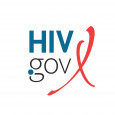On March 11, 2024, the White House released President Joe Biden’s Fiscal Year 2025 (FY25) Federal Budget, which includes important investments in HIV. The investments total more than $7.7 billion and include increases in funding for the Ryan White HIV/AIDS Program, the Indian Health Service (IHS), and the Housing Opportunities for Persons With AIDS (HOPWA) program. The Budget also proposes new programs and funding for HIV PrEP and the modernization of state HIV criminalization statutes.
Learn more on HIV.gov’s Federal HIV Budget page.

Cover of President Biden’s FY25 budge proposalCourtesy of HIV.gov/whitehouse.gov
“This budget lays out a vision for a nation that invests in all aspects of health, fosters innovation, and supports its most vulnerable. This budget continues our shift from a nation focused on illness to one that promotes wellness,” said HHS Secretary Xavier Becerra.” Read more about the funding proposed for HHS in the FY25 HHS Budget in Brief (PDF, 10.21MB).
Nearly $600 Million Requested for EHE Initiative
President Biden’s FY25 Budget requests $593 million in funding across CDC, HRSA, IHS, and NIH to support continued scale-up and implementation of the Ending the HIV Epidemic in the U.S. (EHE) initiative. This represents a $20 million increase over the FY23 enacted funding level, with increases proposed for the Ryan White HIV/AIDS Program and the Indian Health Service. The specific funding amounts proposed by agency are:
- $220 million for CDC
- $332 million for HRSA
- $175 million to deliver HIV care through HRSA’s Ryan White HIV/AIDS Program
- $157 million to provide HIV testing, linkage to care, and prescription of HIV PrEP and associated medical costs through HRSA’s Health Center Program
- $15 million to IHS for an initiative to treat or reduce the transmission of HIV and HCV
- $26 million for NIH for implementation research projects in the EHE jurisdictions
“The proposed funding included in this budget to continue the EHE initiative’s HIV testing, prevention, and care and treatment services will support continued innovation and tailored service delivery in the communities most affected, moving us closer to our goal of ending the HIV epidemic,” observed CAPT John Oguntomilade, PhD, EHE Coordination Lead in the HHS Office of Infectious Disease and HIV/AIDS Policy.
Read more on HIV.gov’s EHE Funding page.
Core HIV Funding and New HIV Proposals
In addition to the EHE funding, the President’s FY25 Budget proposes continued funding for core HIV programs and services administered by CDC and HRSA, and HIV research across NIH. It also proposes new HIV programs:
- PrEP Services: The FY25 Budget eliminates barriers to accessing pre-exposure prophylaxis (PrEP) for Medicaid beneficiaries and proposes a new mandatory program to guarantee PrEP at no cost for all uninsured and underinsured individuals and provide essential wrap-around services with initial year funding of $213 million.
- Modernizing State HIV Criminal Statutes: The FY25 Budget invests in State and local efforts to promote equity and protect civil rights through a new $10 million Department of Justice grant program to support modernization of outdated state criminal statutes with a discriminatory impact on HIV-positive individuals.
Funding for Programs Also Supports Syndemic Response
The President’s FY25 Budget also includes investments that can support addressing the syndemic of HIV, viral hepatitis, STIs, substance use disorder, and mental health. For example, the Budget proposes a national program to significantly expand screening, testing, treatment, prevention, and monitoring of hepatitis C infections in the United States, with a specific focus on populations with high infection levels. The budget also proposes increases in the SAMHSA-administered Community Mental Health Services Block Grant as well as in mental health research at NIH to support better diagnostics, improved treatments, and enhanced precision of care for mental health. While not specifically focused on HIV, investments in these programs can have a positive impact on the overall health and well-being of people with and experiencing risk for HIV.
This blog post was published March 22, 2024, on HIV.gov.








Comments
Comments